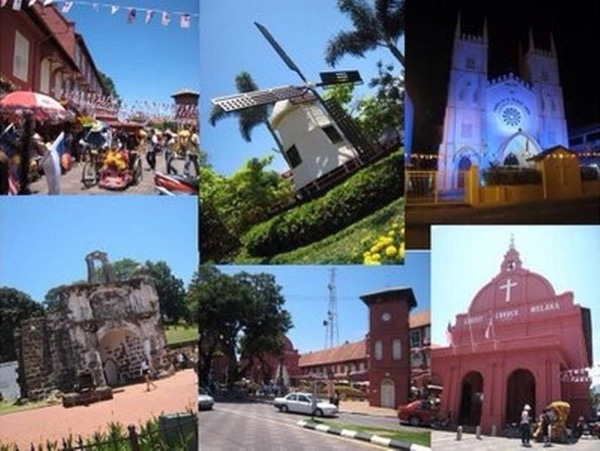17 November 2011 | Last updated at 09:08AM
Marking the date the Portuguese came a-calling
By ADRIAN DAVID AND JASON GERALD JOHN
MALACCA
streets@nstp.com.my
Portuguese culture was splendidly displayed over four days of pomp and gaiety to commemorate the 500th year of the arrival of the former European naval power in Malacca.
The Trez Amigos comprising Emile Mossinac (left), Horace Santa Maria (with walking stick) and brother Arthurs Santa Maria(right) after receiving their merit award from MPEA president Michael Singho (in suit).
Portuguese
The Portuguese Settlement in Ujong Pasir in the former Straits Settlement saw a hive of activity with cultural activities, music, dances, and dining during the celebrations last month.
Malacca Chief Minister Datuk Seri Mohamed Ali Rustam launched the event on Oct 28, with the official dinner and dance held the following day.
The latter event was attended by state police chief Senior Assistant Commissioner Datuk Chua Ghee Lye and Malacca Portuguese Eurasian Association president Michael Singho, who was the event organising chairman.
Performances were given by local groups, as well as those from Portugal, Timor-Leste, Selangor and Federal Territory Eurasian Association, Penang Eurasian Association, Australia Eurasian Association of Western Australia, Sarawak Eurasian Association, Kedah Eurasian Association, Perak Eurasian Association and the Eurasian Association of Singapore.
People of Portuguese descent from Lisbon, Australia, India, East Timor, Indonesia and Singapore joined their Malaysian counterparts to mark the anniversary of Alfonso d'Albuquerque's arrival to Malacca on Aug 24, 1511. The Portuguese navigator came from Goa, India, with 18 ships and 1,200 men.
The celebration, themed Our Roots... Our Heritage... Our Home, attracted tourists and foreign media. They tasted traditional dishes such as belacan (shrimp paste), cincalok (fermented shrimps), acar (pickles) and debel curry. They also got acquainted with cultural activities such as dances and songs.
The event also saw an exhibition of contemporary items.
There were cooking demonstrations by famous local chefs, handicraft demos by cottage industries, and local fishermen pitting their offshore skills such as the sewing and repairing of nets. Fairs which sold souvenirs, costumes and handicrafts, and indoor and outdoor games were added attractions.
There were songs and music aplenty from a legion of musicians. Not to be missed were the branyo folk dance and cultural performances that made the celebrations a truly Portuguese affair. The event is a reflection of how the settlement has become the bastion of Portuguese-Eurasian heritage and culture.
Most of the hymns at the mass at the settlement's chapel were sung in Cristang, the local Portuguese dialect.
The celebrations ended with a float parade of replicas of the 16th-century Portuguese ship, Flor de la Mar (Flower of the Sea), the fort A' Famosa (The Famous), fishing boats, costume-clad revellers, musicians and cultural group performances.
It was in 1641 that the Dutch conquered the Portuguese to take control of Malacca.
Read more: Marking the date the Portuguese came a-calling - Central - New Straits Times http://www.nst.com.my/streets/central/marking-the-date-the-portuguese-came-a-calling-1.6877#ixzz1dwYmjiTO

No comments:
Post a Comment